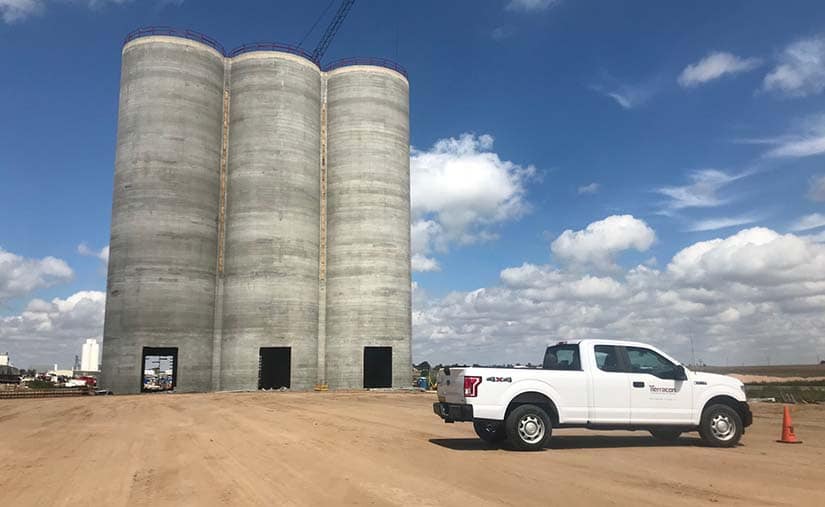Find an office location
More than 175 offices from coast to coast.

Have you ever seen a solid concrete structure with no apparent seams and wondered, “How did they build that?” The answer is slip-form placement. The primary advantage of slip-form construction over stacked concrete is that it results in a finished structure with no joints or seams that can fail. Seamless structures deliver a longer service life and more secure protection for the contents stored within. While slip-form structures have been in use since the early twentieth century for storage silos, grain elevators, and other structures, they are increasingly being used today to build sand silos for oil fracking.
TranSystems engaged Terracon to perform concrete materials testing and reinforcing steel observations on a slip-form placed grain silo measuring 133 feet tall, located in Eaton, Colo. The process involved a single technician on the deck observing the steel, and a second technician on the ground sampling and testing the concrete. The use of slip-form construction techniques requires continuous staffing, and with this project, Terracon technicians from opposite sides of the country (North Carolina and Oregon) responded to meet the project needs. Once a slip-form project has started, it cannot be stopped until it’s completed. The construction schedule included six days of around-the-clock concrete placement as the slip forms slowly gained in elevation at a rate of approximately 8 inches per hour.
Based on experience with slip-form techniques, Terracon’s team knew that pre-task planning of the placement itself was critical to the project’s success. At Terracon safety is the most important priority, so the silo project site was reviewed prior to the project start to identify potential issues. Safety hazards were acknowledged at various locations including areas for staging of testing, and points of access to the deck of the slip-form. Additionally, the chain of communication was established for workers on site, potential evacuation routes were identified, and the equipment and supplies the technicians would need were determined.
Throughout the project, more than 3,500 cubic yards of concrete were placed over 120 continuous hours. With proactive planning, a skilled team, and a focus on safety, a quality product was delivered. While the technique of slip-form placed concrete is not used as often as other methods, Terracon’s skilled technicians have the needed expertise for observation and construction of a slip-form placed product within our toolbox of materials testing services.
Christian Stratton is materials department manager for Terracon’s Greeley, Colo., office, where he has also worked as a field technician. He assists clients with project strategy and management, budgets and proposal development.
More than 175 offices from coast to coast.